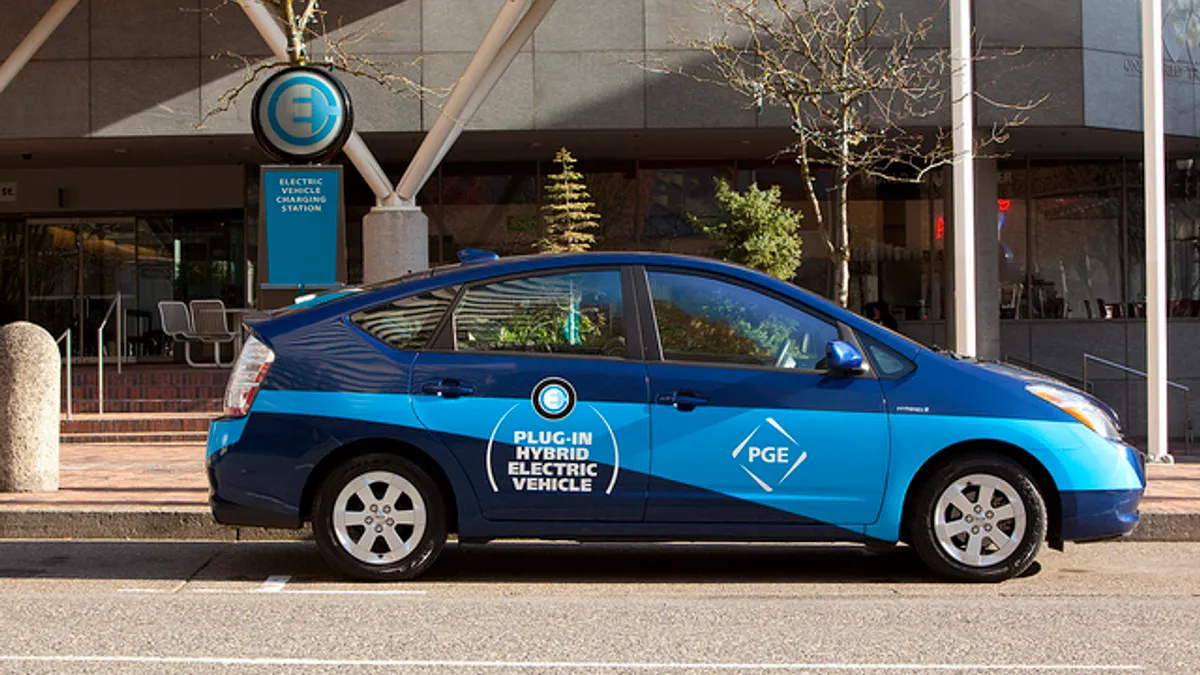Dive Brief:
- The Public Utility Commission of Oregon on Feb. 14 accepted Portland General Electric's (PGE) transportation electrification (TE) plan, opening an avenue for the utility to propose residential and public charger programs and make infrastructure investments that will help to accelerate adoption of electric vehicles in its territory.
- PGE officials say there are as many as 25,000 emissions-free vehicles in its territory, but it is anticipating 100,000 in five years and up to 1 million by 2050.
- While the plan regulators accepted does not include funding for specific new program offerings, PGE Portfolio Manager of Electric Transportation Aaron Milano said the utility has plans for residential charger rebates and associated demand management programs that will turn EVs into a grid resource that brings benefits to all customers.
Dive Insight:
Milano told Oregon regulators at last week's PUC meeting that the utility's plan is "really a framework to help guide and inform future more ambitious program proposals going forward."
PGE will need to file an update of its TE plan with regulators in 2021, but new programs will likely be proposed before that, Milano told Utility Dive.
"We see that there is a large market forming and a lot of investment on the auto manufacturer side," he said. "Utilities like us have a role in making sure we get infrastructure out in a manner that benefits all customers and reduces the costs to serve the vehicles coming."
PGE has already built and is operating a network of 40 public DC Fast Charger stations that regulators approved in 2018. The new TE plan includes a charging needs assessment that indicates about 500 public Level 2 and DC Fast Charger stations will be required by 2025.
The PUC's approval of Portland General's strategy "really gives us the space to go and propose new offerings," Milano said. In the near-term, the utility is planning to file program proposals for residential charging incentives, a business charging program, and also offerings for municipal fleets. There is also language in the TE plan focused on make-ready construction.
PGE is planning to propose a $500 residential charger incentive and a $1,000 incentive for income-qualified customers. Those would pair with a $50 annual incentive to participate in demand management programs.
Milano said the utility is supportive of time-of-use rates to manage EV charging, but also sees the potential for them to push charging demand into limited hours and potentially overload local circuits. The use of smart chargers that work with demand response programs will give PGE more control and flexibility, said Milano.
PGE is expecting residential customers to install about 40,000 home chargers in the next five years.
"Our hope is that we get more of that control at the home charger, so we're able to flex loads," Milano said.
Oregon ranks fifth in the nation in plug-in vehicles per capita, with almost 30,000 registered emissions-free vehicles on its roads and 1,645 public chargers available.
"We really see this plan giving us that overall, North Star direction," Milano said.














